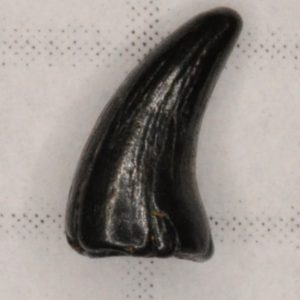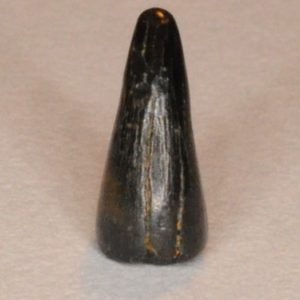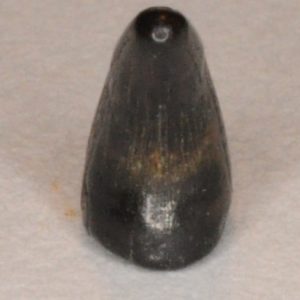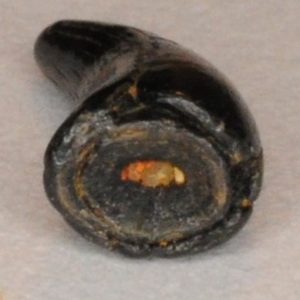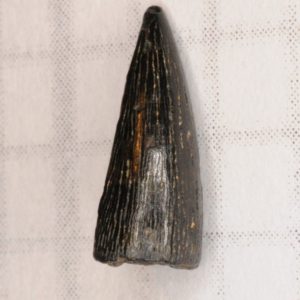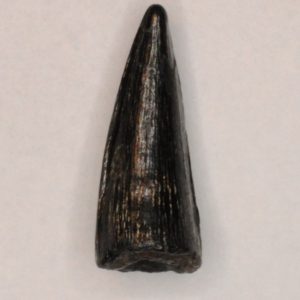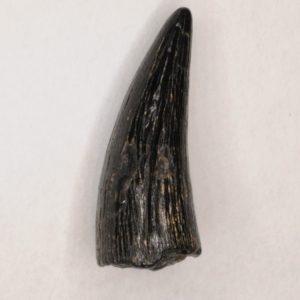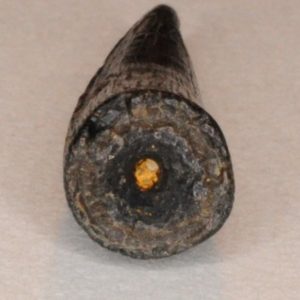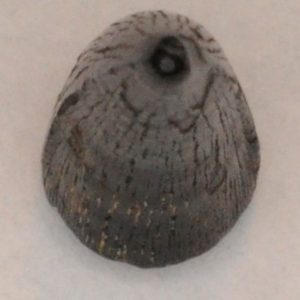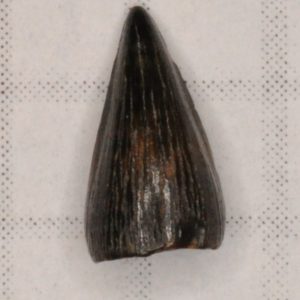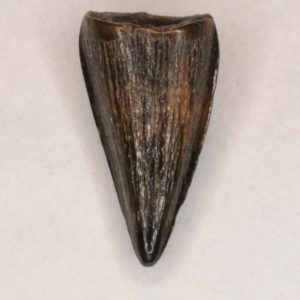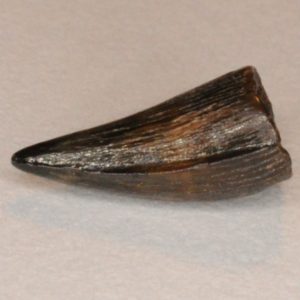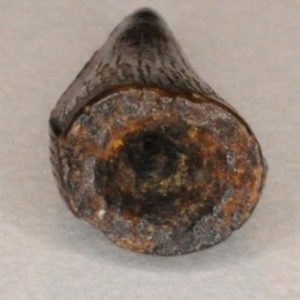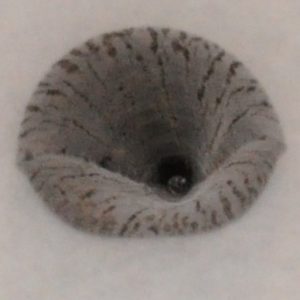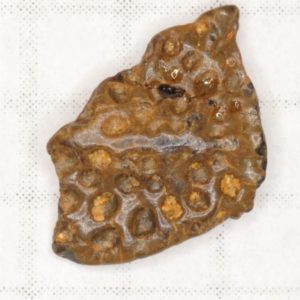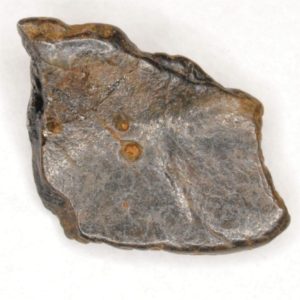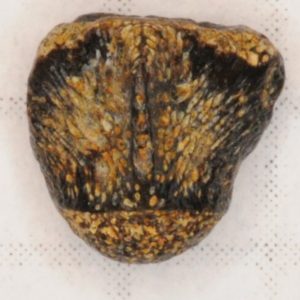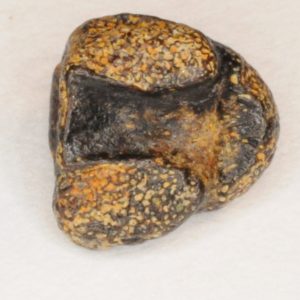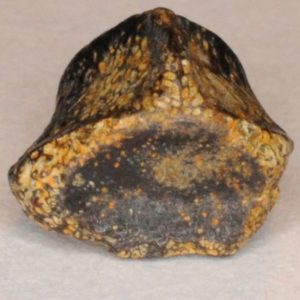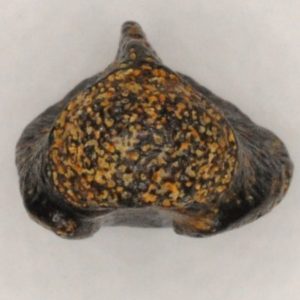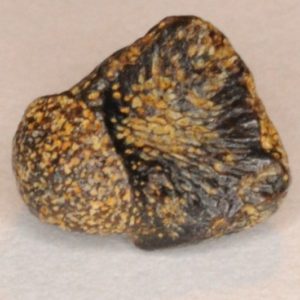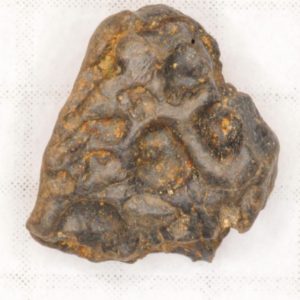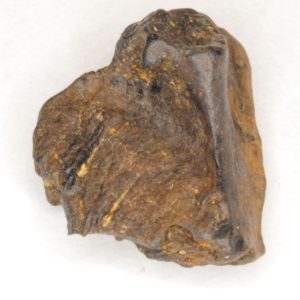NJfossils.com
"Fossils aren't a hobby, they're a lifestyle."Crocodiles (Crocodilia)
Age – Late Cretaceous; Commonality – very uncommon; Size – teeth: 1/8-7/8 inches, Osteoderms: ~1/2-1 inches (fragments), ~1-2 inches (complete), Vertebrae: 1/2-2 inches (centrums)
These slender crocodile teeth are probably from fish-eating crocs such as Thoracosaurus neocesariensis. These teeth have faint carinae, a relatively deep but narrow basal indentation, usually a circular base, concentric circles in the base (info from Plax on TheFossilForum), and most of the time a smooth crown (sometimes some posterior croc teeth have ridges).
Osteoderms were bony plates that were under the crocodiles’ skin. They provided protection and also helped the crocs regulate their temperature. They are flat and have many relatively deep dimples. They can sometimes be confused with Trionyx sp. turtle shell pieces (crocs have deeper dimples and the dimple pattern is less evenly distributed). Also, Trionyx sp. shell pieces possess the typical porous bone structure unlike the croc osteoderms.
Most NJ crocodile remains are teeth and osteoderms. Other material is much rarer. The vertebrae can be confused with mosasaur vertebrae, but are more elongated and seem to have heavier process attachments.
Teeth
Anteriormost tooth.
Anterior tooth. This is the typical tooth form seen.
This tooth came from a posterior position.
There is definitely more than one species present, which coupled with variation and wear makes it hard to even attribute a tooth to a position. In sharks you would likely figure out the species before the position; in Croc teeth, however, a species level identification is impractical most of the time in NJ because of not many associated remains, but since Croc teeth of different species are very similar, there is a chance one can be assigned to a position.
Osteoderms
Crocodile osteoderms are dimpled on one side and smooth on the other. They are usually always fragmentary. The osteoderms, which were located under the skin, served as body armor and helped regulate the crocodilian’s body temperature. This osteoderm is probably about half complete. The line running on the external surface is the middle of the osteoderm.
Vertebra
Possible juvenile Croc vertebra (there is a small chance it could actually be from one of the small terrestrial reptiles). Croc vertebrae generally have larger joint stubs than Mosasaur verts.
Skull Fragment
Skull fragments are similar to osteoderms, but have more irregular divots and have a backside that has a different surface texture. This one has a piece on the backside that would have jointed to the rest of the skull. Usually the pieces of Croc skull are from the top of the skull (that is why they resemble the “regular” Croc osteoderms).

